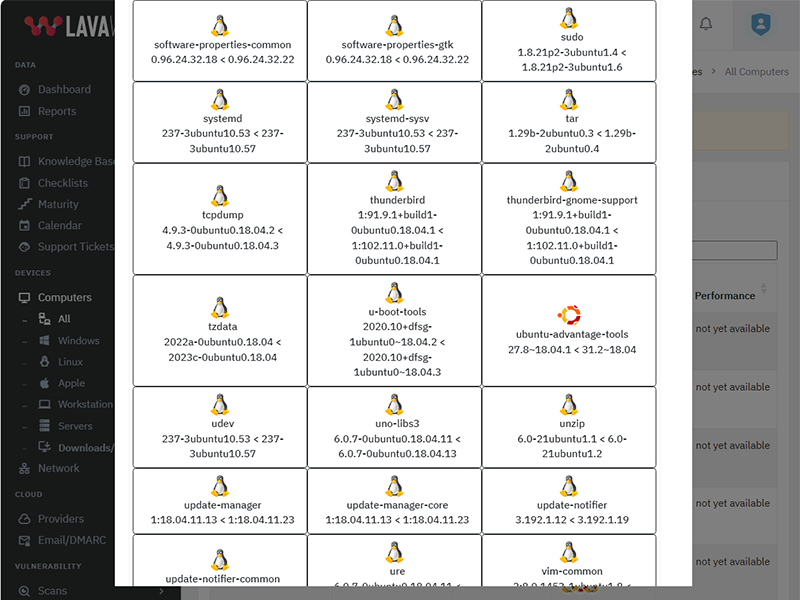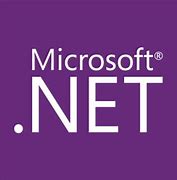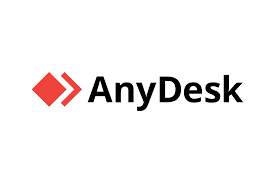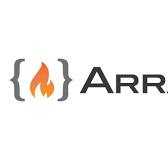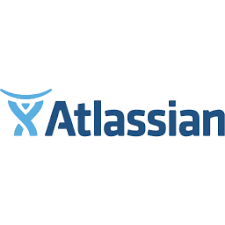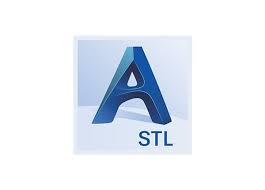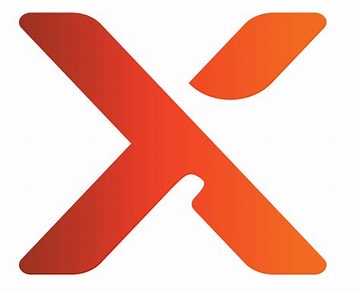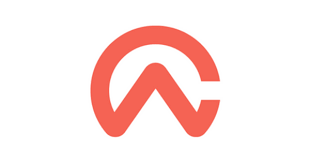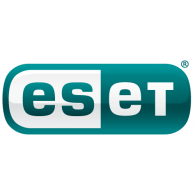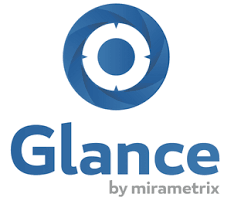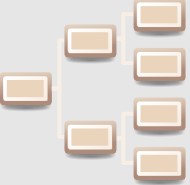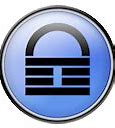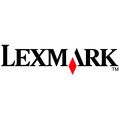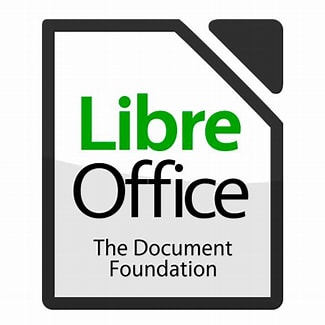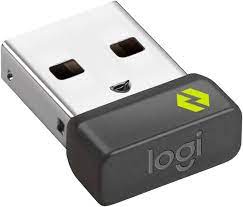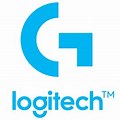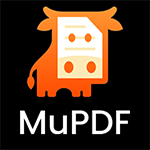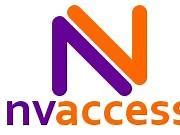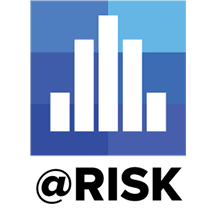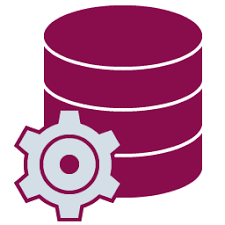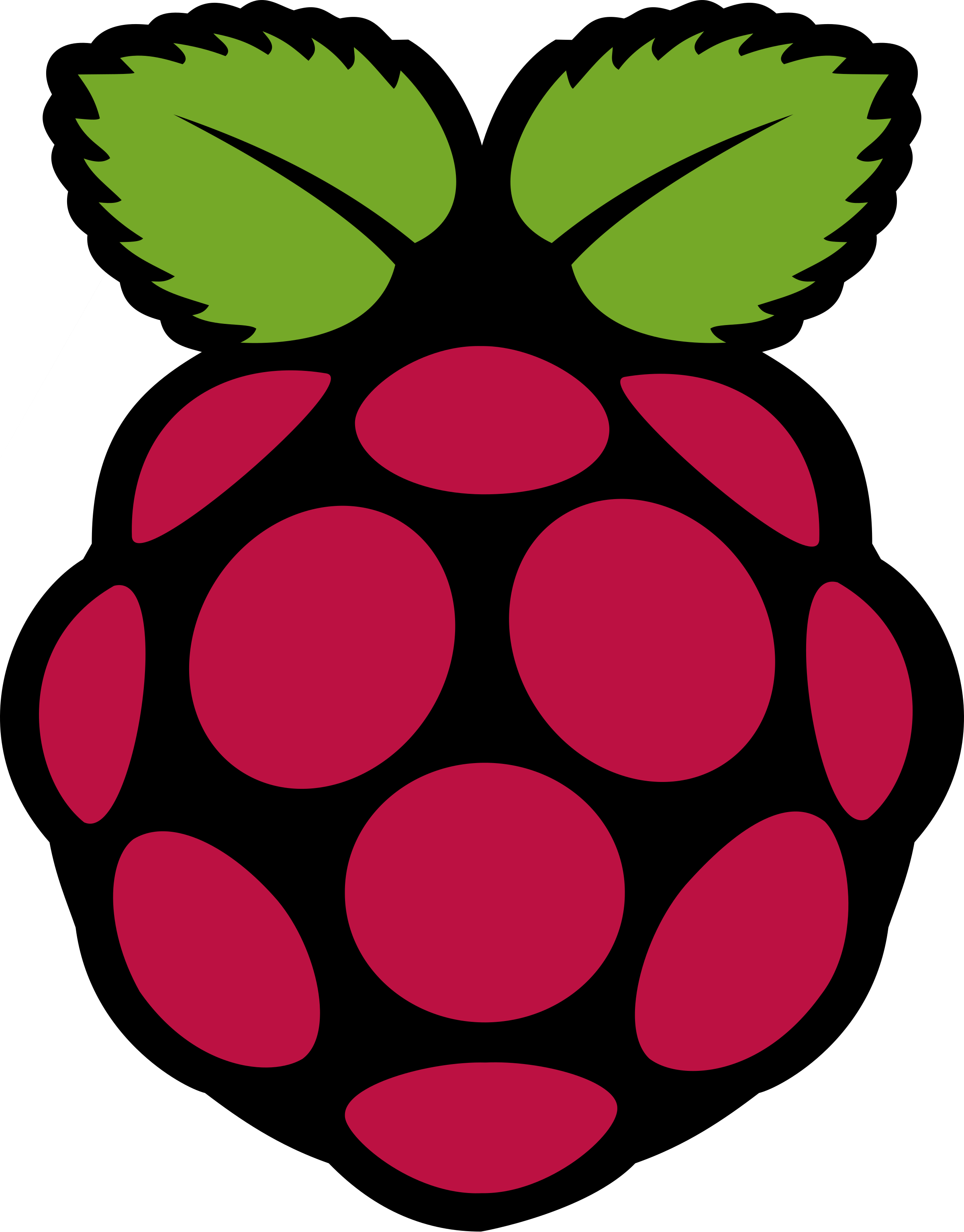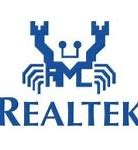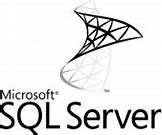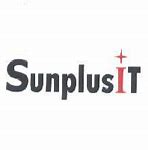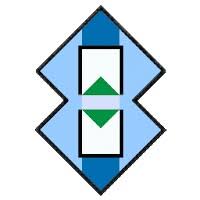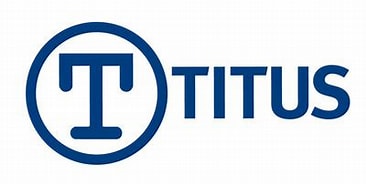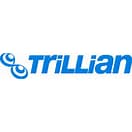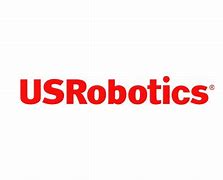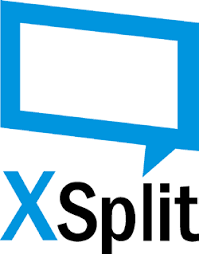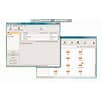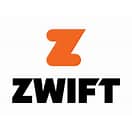
Update Tenable Nessus to version 10.8.3.20010
What patches are you missing?
CVE Vulnerabilities for Tenable Nessus
| CVE | Published | Severity | Details | Exploitability |
| CVE‑2024‑0955 | 2024‑02‑07 00:15:55 | MEDIUM (5) | A stored XSS vulnerability exists where an authenticated, remote attacker with administrator privileges on the Nessus application could alter Nessus proxy settings, which could lead to the execution of remote arbitrary scripts. | 2 |
| CVE‑2023‑6178 | 2023‑11‑20 21:15:09 | MEDIUM (7) | An arbitrary file write vulnerability exists where an authenticated attacker with privileges on the managing application could alter Nessus Rules variables to overwrite arbitrary files on the remote host, which could lead to a denial of service condition. | 2 |
| CVE‑2023‑6062 | 2023‑11‑20 21:15:08 | MEDIUM (7) | An arbitrary file write vulnerability exists where an authenticated, remote attacker with administrator privileges on the Nessus application could alter Nessus Rules variables to overwrite arbitrary files on the remote host, which could lead to a denial of service condition. | 2 |
| CVE‑2023‑3251 | 2023‑08‑29 19:15:27 | MEDIUM (4) | A pass-back vulnerability exists where an authenticated, remote attacker with administrator privileges could uncover stored SMTP credentials within the Nessus application.This issue affects Nessus: before 10.6.0. | 2 |
| CVE‑2023‑2005 | 2023‑06‑26 18:15:10 | HIGH (9) | Vulnerability in Tenable Tenable.Io, Tenable Nessus, Tenable Security Center.This issue affects Tenable.Io: before Plugin Feed ID #202306261202 ; Nessus: before Plugin Feed ID #202306261202 ; Security Center: before Plugin Feed ID #202306261202 . This vulnerability could allow a malicious actor with sufficient permissions on a scan target to place a binary in a specific filesystem location, and abuse the impacted plugin in order to escalate privileges. | 3 |
| CVE‑2023‑0101 | 2023‑01‑20 19:15:18 | HIGH (9) | A privilege escalation vulnerability was identified in Nessus versions 8.10.1 through 8.15.8 and 10.0.0 through 10.4.1. An authenticated attacker could potentially execute a specially crafted file to obtain root or NT AUTHORITY / SYSTEM privileges on the Nessus host. | 3 |
| CVE‑2022‑33757 | 2022‑10‑25 17:15:53 | MEDIUM (7) | An authenticated attacker could read Nessus Debug Log file attachments from the web UI without having the correct privileges to do so. This may lead to the disclosure of information on the scan target and/or the Nessus scan to unauthorized parties able to reach the Nessus instance. | 3 |
| CVE‑2022‑28291 | 2022‑10‑17 16:15:21 | MEDIUM (7) | Insufficiently Protected Credentials: An authenticated user with debug privileges can retrieve stored Nessus policy credentials from the “nessusd” process in cleartext via process dumping. The affected products are all versions of Nessus Essentials and Professional. The vulnerability allows an attacker to access credentials stored in Nessus scanners, potentially compromising its customers’ network of assets. | 3 |
| CVE‑2022‑0778 | 2022‑03‑15 17:15:09 | HIGH (8) | The BN_mod_sqrt() function, which computes a modular square root, contains a bug that can cause it to loop forever for non-prime moduli. Internally this function is used when parsing certificates that contain elliptic curve public keys in compressed form or explicit elliptic curve parameters with a base point encoded in compressed form. It is possible to trigger the infinite loop by crafting a certificate that has invalid explicit curve parameters. Since certificate parsing happens prior to verification of the certificate signature, any process that parses an externally supplied certificate may thus be subject to a denial of service attack. The infinite loop can also be reached when parsing crafted private keys as they can contain explicit elliptic curve parameters. Thus vulnerable situations include: - TLS clients consuming server certificates - TLS servers consuming client certificates - Hosting providers taking certificates or private keys from customers - Certificate authorities parsing certification requests from subscribers - Anything else which parses ASN.1 elliptic curve parameters Also any other applications that use the BN_mod_sqrt() where the attacker can control the parameter values are vulnerable to this DoS issue. In the OpenSSL 1.0.2 version the public key is not parsed during initial parsing of the certificate which makes it slightly harder to trigger the infinite loop. However any operation which requires the public key from the certificate will trigger the infinite loop. In particular the attacker can use a self-signed certificate to trigger the loop during verification of the certificate signature. This issue affects OpenSSL versions 1.0.2, 1.1.1 and 3.0. It was addressed in the releases of 1.1.1n and 3.0.2 on the 15th March 2022. Fixed in OpenSSL 3.0.2 (Affected 3.0.0,3.0.1). Fixed in OpenSSL 1.1.1n (Affected 1.1.1-1.1.1m). Fixed in OpenSSL 1.0.2zd (Affected 1.0.2-1.0.2zc). | 4 |
| CVE‑2021‑3450 | 2021‑03‑25 15:15:14 | HIGH (7) | The X509_V_FLAG_X509_STRICT flag enables additional security checks of the certificates present in a certificate chain. It is not set by default. Starting from OpenSSL version 1.1.1h a check to disallow certificates in the chain that have explicitly encoded elliptic curve parameters was added as an additional strict check. An error in the implementation of this check meant that the result of a previous check to confirm that certificates in the chain are valid CA certificates was overwritten. This effectively bypasses the check that non-CA certificates must not be able to issue other certificates. If a "purpose" has been configured then there is a subsequent opportunity for checks that the certificate is a valid CA. All of the named "purpose" values implemented in libcrypto perform this check. Therefore, where a purpose is set the certificate chain will still be rejected even when the strict flag has been used. A purpose is set by default in libssl client and server certificate verification routines, but it can be overridden or removed by an application. In order to be affected, an application must explicitly set the X509_V_FLAG_X509_STRICT verification flag and either not set a purpose for the certificate verification or, in the case of TLS client or server applications, override the default purpose. OpenSSL versions 1.1.1h and newer are affected by this issue. Users of these versions should upgrade to OpenSSL 1.1.1k. OpenSSL 1.0.2 is not impacted by this issue. Fixed in OpenSSL 1.1.1k (Affected 1.1.1h-1.1.1j). | 2 |
| CVE‑2021‑3449 | 2021‑03‑25 15:15:13 | MEDIUM (6) | An OpenSSL TLS server may crash if sent a maliciously crafted renegotiation ClientHello message from a client. If a TLSv1.2 renegotiation ClientHello omits the signature_algorithms extension (where it was present in the initial ClientHello), but includes a signature_algorithms_cert extension then a NULL pointer dereference will result, leading to a crash and a denial of service attack. A server is only vulnerable if it has TLSv1.2 and renegotiation enabled (which is the default configuration). OpenSSL TLS clients are not impacted by this issue. All OpenSSL 1.1.1 versions are affected by this issue. Users of these versions should upgrade to OpenSSL 1.1.1k. OpenSSL 1.0.2 is not impacted by this issue. Fixed in OpenSSL 1.1.1k (Affected 1.1.1-1.1.1j). | 2 |
| CVE‑2021‑20135 | 2021‑11‑03 00:15:08 | MEDIUM (7) | Nessus versions 8.15.2 and earlier were found to contain a local privilege escalation vulnerability which could allow an authenticated, local administrator to run specific executables on the Nessus Agent host. Tenable has included a fix for this issue in Nessus 10.0.0. The installation files can be obtained from the Tenable Downloads Portal (https://www.tenable.com/downloads/nessus). | 1 |
| CVE‑2021‑20106 | 2021‑07‑21 15:15:14 | MEDIUM (7) | Nessus Agent versions 8.2.5 and earlier were found to contain a privilege escalation vulnerability which could allow a Nessus administrator user to upload a specially crafted file that could lead to gaining administrator privileges on the Nessus host. | 1 |
| CVE‑2021‑20100 | 2021‑06‑28 11:15:08 | MEDIUM (7) | Nessus Agent 8.2.4 and earlier for Windows were found to contain multiple local privilege escalation vulnerabilities which could allow an authenticated, local administrator to run specific Windows executables as the Nessus host. This is different than CVE-2021-20099. | 1 |
| CVE‑2021‑20099 | 2021‑06‑28 11:15:08 | MEDIUM (7) | Nessus Agent 8.2.4 and earlier for Windows were found to contain multiple local privilege escalation vulnerabilities which could allow an authenticated, local administrator to run specific Windows executables as the Nessus host. This is different than CVE-2021-20100. | 1 |
| CVE‑2021‑20079 | 2021‑06‑29 19:15:09 | MEDIUM (7) | Nessus versions 8.13.2 and earlier were found to contain a privilege escalation vulnerability which could allow a Nessus administrator user to upload a specially crafted file that could lead to gaining administrator privileges on the Nessus host. | 1 |
| CVE‑2020‑5793 | 2020‑11‑05 20:15:17 | HIGH (8) | A vulnerability in Nessus versions 8.9.0 through 8.12.0 for Windows & Nessus Agent 8.0.0 and 8.1.0 for Windows could allow an authenticated local attacker to copy user-supplied files to a specially constructed path in a specifically named user directory. An attacker could exploit this vulnerability by creating a malicious file and copying the file to a system directory. The attacker needs valid credentials on the Windows system to exploit this vulnerability. | 2 |
| CVE‑2020‑5774 | 2020‑08‑21 13:15:14 | HIGH (7) | Nessus versions 8.11.0 and earlier were found to maintain sessions longer than the permitted period in certain scenarios. The lack of proper session expiration could allow attackers with local access to login into an existing browser session. | 2 |
| CVE‑2020‑5765 | 2020‑07‑15 13:15:10 | MEDIUM (5) | Nessus 8.10.0 and earlier were found to contain a Stored XSS vulnerability due to improper validation of input during scan configuration. An authenticated, remote attacker could potentially exploit this vulnerability to execute arbitrary code in a user's session. Tenable has implemented additional input validation mechanisms to correct this issue in Nessus 8.11.0. | 2 |
| CVE‑2019‑3982 | 2019‑10‑23 19:15:12 | MEDIUM (7) | Nessus versions 8.6.0 and earlier were found to contain a Denial of Service vulnerability due to improper validation of specific imported scan types. An authenticated, remote attacker could potentially exploit this vulnerability to cause a Nessus scanner to become temporarily unresponsive. | 3 |
| CVE‑2019‑3974 | 2019‑08‑15 19:15:11 | HIGH (9) | Nessus 8.5.2 and earlier on Windows platforms were found to contain an issue where certain system files could be overwritten arbitrarily, potentially creating a denial of service condition. | 0 |
| CVE‑2019‑3962 | 2019‑07‑01 20:15:12 | MEDIUM (4) | Content Injection vulnerability in Tenable Nessus prior to 8.5.0 may allow an authenticated, local attacker to exploit this vulnerability by convincing another targeted Nessus user to view a malicious URL and use Nessus to send fraudulent messages. Successful exploitation could allow the authenticated adversary to inject arbitrary text into the feed status, which will remain saved post session expiration. | 0 |
| CVE‑2019‑3961 | 2019‑06‑25 21:15:10 | MEDIUM (4) | Nessus versions 8.4.0 and earlier were found to contain a reflected XSS vulnerability due to improper validation of user-supplied input. An unauthenticated, remote attacker could potentially exploit this vulnerability via a specially crafted request to execute arbitrary script code in a users browser session. | 0 |
| CVE‑2019‑3923 | 2019‑02‑12 04:29:01 | LOW (4) | Nessus versions 8.2.1 and earlier were found to contain a stored XSS vulnerability due to improper validation of user-supplied input. An authenticated, remote attacker could potentially exploit this vulnerability via a specially crafted request to execute arbitrary script code in a user's browser session. Tenable has released Nessus 8.2.2 to address this issue. | 0 |
| CVE‑2019‑1559 | 2019‑02‑27 23:29:00 | MEDIUM (6) | If an application encounters a fatal protocol error and then calls SSL_shutdown() twice (once to send a close_notify, and once to receive one) then OpenSSL can respond differently to the calling application if a 0 byte record is received with invalid padding compared to if a 0 byte record is received with an invalid MAC. If the application then behaves differently based on that in a way that is detectable to the remote peer, then this amounts to a padding oracle that could be used to decrypt data. In order for this to be exploitable "non-stitched" ciphersuites must be in use. Stitched ciphersuites are optimised implementations of certain commonly used ciphersuites. Also the application must call SSL_shutdown() twice even if a protocol error has occurred (applications should not do this but some do anyway). Fixed in OpenSSL 1.0.2r (Affected 1.0.2-1.0.2q). | 2 |
| CVE‑2018‑1148 | 2018‑05‑18 22:29:00 | MEDIUM (4) | In Nessus before 7.1.0, Session Fixation exists due to insufficient session management within the application. An authenticated attacker could maintain system access due to session fixation after a user password change. | 0 |
| CVE‑2018‑1147 | 2018‑05‑18 22:29:00 | LOW (4) | In Nessus before 7.1.0, a XSS vulnerability exists due to improper input validation. A remote authenticated attacker could create and upload a .nessus file, which may be viewed by an administrator allowing for the execution of arbitrary script code in a user's browser session. In other scenarios, XSS could also occur by altering variables from the Advanced Settings. | 0 |
| CVE‑2018‑1141 | 2018‑03‑20 18:29:00 | MEDIUM (4) | When installing Nessus to a directory outside of the default location, Nessus versions prior to 7.0.3 did not enforce secure permissions for sub-directories. This could allow for local privilege escalation if users had not secured the directories in the installation location. | 0 |
| CVE‑2017‑7850 | 2017‑04‑19 14:59:01 | HIGH (7) | Nessus 6.10.x before 6.10.5 was found to be vulnerable to a local privilege escalation issue due to insecure permissions when running in Agent Mode. | 0 |
| CVE‑2017‑7849 | 2017‑04‑19 14:59:01 | LOW (2) | Nessus 6.10.x before 6.10.5 was found to be vulnerable to a local denial of service condition due to insecure permissions when running in Agent Mode. | 0 |
| CVE‑2017‑7199 | 2017‑03‑23 16:59:01 | HIGH (7) | Nessus 6.6.2 - 6.10.3 contains a flaw related to insecure permissions that may allow a local attacker to escalate privileges when the software is running in Agent Mode. Version 6.10.4 fixes this issue. | 0 |
| CVE‑2017‑6543 | 2017‑03‑08 23:59:00 | MEDIUM (6) | Tenable Nessus before 6.10.2 (as used alone or in Tenable Appliance before 4.5.0) was found to contain a flaw that allowed a remote, authenticated attacker to upload a crafted file that could be written to anywhere on the system. This could be used to subsequently gain elevated privileges on the system (e.g., after a reboot). This issue only affects installations on Windows. | 0 |
| CVE‑2017‑5179 | 2017‑01‑05 22:59:00 | LOW (4) | Cross-site scripting (XSS) vulnerability in Tenable Nessus before 6.9.3 allows remote authenticated users to inject arbitrary web script or HTML via unspecified vectors. | 0 |
| CVE‑2017‑2122 | 2017‑05‑12 18:29:01 | LOW (4) | Cross-site scripting vulnerability in Nessus versions 6.8.0, 6.8.1, 6.9.0, 6.9.1 and 6.9.2 allows remote authenticated attackers to inject arbitrary web script or HTML via unspecified vectors. | 0 |
| CVE‑2017‑18214 | 2018‑03‑04 21:29:00 | HIGH (8) | The moment module before 2.19.3 for Node.js is prone to a regular expression denial of service via a crafted date string, a different vulnerability than CVE-2016-4055. | 4 |
| CVE‑2017‑11506 | 2017‑08‑09 12:29:00 | MEDIUM (6) | When linking a Nessus scanner or agent to Tenable.io or other manager, Nessus 6.x before 6.11 does not verify the manager's TLS certificate when making the initial outgoing connection. This could allow man-in-the-middle attacks. | 0 |
| CVE‑2016‑9260 | 2017‑01‑31 22:59:01 | LOW (4) | Cross-site scripting (XSS) vulnerability in Tenable Nessus before 6.9 allows remote authenticated users to inject arbitrary web script or HTML via vectors related to handling of .nessus files. | 0 |
| CVE‑2016‑9259 | 2017‑02‑28 18:59:00 | LOW (4) | Cross-site scripting (XSS) vulnerability in Tenable Nessus before 6.9.1 allows remote authenticated users to inject arbitrary web script or HTML via unspecified vectors. | 0 |
| CVE‑2016‑4055 | 2017‑01‑23 21:59:01 | MEDIUM (7) | The duration function in the moment package before 2.11.2 for Node.js allows remote attackers to cause a denial of service (CPU consumption) via a long string, aka a "regular expression Denial of Service (ReDoS)." | 3 |
| CVE‑2016‑100002 | 2019‑12‑27 15:15:12 | MEDIUM (5) | Tenable Nessus before 6.8 has a stored XSS issue that requires admin-level authentication to the Nessus UI, and would potentially impact other admins (Tenable IDs 5218 and 5269). | 2 |
| CVE‑2014‑4980 | 2014‑07‑23 14:55:06 | MEDIUM (5) | The /server/properties resource in Tenable Web UI before 2.3.5 for Nessus 5.2.3 through 5.2.7 allows remote attackers to obtain sensitive information via the token parameter. | 0 |
| CVE‑2014‑2848 | 2014‑04‑11 15:55:22 | MEDIUM (7) | A race condition in the wmi_malware_scan.nbin plugin before 201402262215 for Nessus 5.2.1 allows local users to gain privileges by replacing the dissolvable agent executable in the Windows temp directory with a Trojan horse program. | 0 |


Get the IT stuff done that nobody wants to do.
Patch more applications, achieve compliance, and prevent problems while reducing stress with Lavawall®.
Security First
A security tool by security auditors. From Passkeys and Argon2i to source validation and MVSP principles, Lavawall® has you covered.
Constant Improvement
More features and more security added nearly every day.
More patchable programs added every week
While Ninite and other patching tools have had the same patch offerings for decades, we're monitoring stats to keep adding the most useful programs (currently over 7,438)!
Details matter
From wrapping TLS communications in extra encryption and uninstalling remote support tools when they aren't used to detailed statistical analysis of system and network performance, Lavawall® goes in-depth.
System Reliability
Monitor battery, disk, and process health. Lavawall® combines system health, age, operating system support, memory levels, and other attributes to prioritize systems for replacement.
Human and automated support
Get immediate fixes, user notifications, admin notifications -- and even security-certified human level 3 support when our advanced statistical analysis confirms a problem or anomaly.
| 2025‑03‑27 | 0.12.64.251 | Add efficiency to package management system |
| 2025‑03‑03 | 0.12.57.244 | Add TPM complience check and ensure consistent memory gathering in windows/linux/mac |
| 2025‑02‑28 | 0.12.56.243 | Windows RAM reporting and persistent scalability framework enhancements |
| 2025‑02‑27 | 0.12.55.242 | Battery health refinements |
| 2025‑02‑26 | 0.12.54.241 | Add battery health statistics |
| 2025‑01‑29 | 0.12.35.222 | Risk score refinements |
| 2025‑01‑17 | 0.12.29.216 | Enhanced compliance and non-standard AV |
| 2025‑01‑13 | 0.12.28.215 | Improved process graphs |
| 2025‑01‑07 | 0.12.27.214 | Antivirus details, compliance |
| 2024‑10‑30 | 0.12.8.195 | Mac update refinements |
| 2024‑10‑21 | 0.12.0.187 | Macos implementaiton, linux and windows improvements |
| 2024‑10‑16 | 0.11.128.186 | Linux stats and system information improvements, improvements for application shutdown |
| 2024‑09‑12 | 0.11.113.171 | CPU Optimizations and Packages reliability improvements |
| 2024‑09‑05 | 0.11.106.164 | Phased deployment enhancements |
| 2024‑09‑02 | 0.11.102.160 | CPU Optimizations and Packages reliability improvements |
| 2024‑08‑30 | 0.11.99.157 | CPU Optimizations and Packages reliability improvements |
| 2024‑08‑29 | 0.11.98.156 | CPU utilization and console event optimization |
| 2024‑08‑28 | 0.11.97.155 | Reliability to detect unusual updates like redistributables. |
| 2024‑08‑26 | 0.11.95.153 | Faster response for reboot requests |
| 2024‑08‑20 | 0.11.92.150 | Additional package upgrade pre-requisites |
| 2024‑07‑26 | 0.11.83.141 | Add resiliency for MAC duplicates and uptime |
| 2024‑07‑25 | 0.11.82.140 | Changes to facilitate cross-platform use. Bitlocker and Windows key refinements |
| 2024‑07‑15 | 0.11.80.138 | Antivirus and temperature added to configuration checks |
| 2024‑07‑15 | 0.11.79.137 | Add configuration checks for execution policy and secure boot |
| 2024‑07‑11 | 0.11.77.135 | load balancing refinements |
| 2024‑07‑10 | 0.11.76.134 | Add additional load balancing and data residency capabilities, add randomness to recurring task timings to decrease server load |
| 2024‑07‑05 | 0.11.74.132 | changes to graph and residual work on user imporsonation |
| 2024‑07‑04 | 0.11.73.131 | Add configuration checks for execution policy and secure boot. |
| 2024‑07‑03 | 0.11.72.130 | Enhanced event log monitoring |
| 2024‑07‑02 | 0.11.71.129 | Add details to Windows updates, enhanced risk metrics for application patches |
| 2024‑06‑19 | 0.11.65.123 | Update resiliancy and garbage collection |
| 2024‑06‑13 | 0.11.60.118 | Enhanced logging |
| 2024‑06‑12 | 0.11.55.113 | Include the primary drive serial number; MAC addresses for built-in wireless, Bluetooth, and ethernet into the device hash to restore uninstalled and reinstalled devices in cases where the motherboard serial is not unique |
| 2024‑06‑07 | 0.11.54.112 | Patch and package uninstall data addition |
| 2024‑06‑05 | 0.11.47.105 | refine per-user registry application listing |
| 2024‑06‑02 | 0.11.45.103 | uninstall and reinstall refinements, refine local logging, refine self-update and uninstall timing |
| 2024‑05‑30 | 0.11.21.79 | various bug fixes and improvements |
| 2024‑05‑28 | 0.11.16.74 | Error logging, registration, and uninstall improvements. |
| 2024‑05‑24 | 0.11.14.72 | applied changes for devices and login commands, changes for registration as well |
| 2024‑05‑22 | 0.11.13.71 | Add Windows computer model, improve Operating System parsing |
| 2024‑05‑21 | 0.11.11.69 | Added additional states for Windows update, flexibility for non-standard program file configurations, support for network diagrams at the switch level, details for Windows editions |
| 2024‑05‑21 | 0.11.10.68 | Add specific cases for Defender patterns and Composer versions. |
| 2024‑05‑17 | 0.11.3.61 | Change Log storage location to c:\program files\Lavawall |
| 2024‑05‑17 | 0.11.1.59 | self-update improvements. |
| 2024‑05‑16 | 0.8.0.55 | error log reporting and management. |
| 2024‑05‑15 | 0.7.0.54 | Websocket resiliency improvements |
| 2024‑05‑09 | 0.6.0.53 | Error log reporting and management. |
| 2024‑05‑01 | 0.5.44.52 | Even more improvements to scheduler |
| 2024‑04‑24 | 0.5.41.49 | Install compatibility with Sandbox |
| 2024‑04‑22 | 0.5.21.29 | Project property changes to enable automated compilation with new features. |
NOTE: changes after June 2024 are incorportated into the Windows Changelog as the codebases for Windows, Linux, and Mac were combined
| 2024‑05‑20 | 253 | Added cleanup of old .json files during a re-install |
| 2024‑05‑13 | 252 | Added apt-get update to install |
| 2024‑05‑06 | 248 | Allow restart to use /var/run/reboot-required if needrestart is not installed |
| 2024‑04‑22 | 239 | Improve internal update and version tracking |
| 2024‑04‑15 | 235 | Add support for Yum packages |
| 2024‑04‑08 | 233 | Align patching with Windows patch reporting |
| 2024‑04‑02 | 228 | Add support for needrestart |
| 2024‑03‑04 | 224 | Schedule restarts |
| 2024‑03‑25 | 221 | Add support for apt packages |
| 2024‑03‑18 | 212 | Implement release management |
| 2024‑03‑11 | 202 | Add user login monitoring |
| 2024‑03‑04 | 189 | Enhance installation reliability |
| 2024‑02‑26 | 187 | Exapand triggers to identify if the instance needs to be restarted |
| 2024‑02‑19 | 146 | Improve compatibility for non-AWS instances |
| 2024‑02‑14 | 138 | Add self-uninstall capabilities |
| 2024‑02‑12 | 135 | Enhance scheduling flexibility |
| 2024‑02‑07 | 132 | Add kernel version tracking |
| 2024‑02‑05 | 124 | Add device hash to cryptographic self-update script validation |
| 2024‑01‑29 | 107 | Enhance encryption of patch data |
| 2024‑01‑22 | 98 | Improve how available storage is calculated |
| 2024‑01‑15 | 97 | Move initial tasks from installation file to sub scripts |
| 2024‑05‑21 | 91 | Improve multi-distribution compatibility |
| 2024‑05‑21 | 79 | Improve encryption reliability |
| 2023‑12‑11 | 68 | Enhance cryptographic validation of new scripts before updating |
| 2023‑11‑20 | 62 | Add inner layer of AES encryption in case TLS inspection doesn't allow for a secure connection |
| 2023‑11‑27 | 56 | Additional base cases for resiliancy |
| 2023‑11‑20 | 54 | Additional headers added to authentication process during installation. |
| 2023‑11‑20 | 53 | Enhanced key management |
| 2023‑11‑15 | 51 | Add insecure installation parameter to allow installation in environments with TLS inspection or other machine-in-the-middle situations. |
| 2023‑11‑06 | 42 | Enhance redundant encryption during installation. |
| 2023‑10‑30 | 33 | Improve install-over compatibility |
| 2023‑10‑23 | 18 | Add reboot configuration and scheduling |
| 2023‑10‑23 | 17 | Add self-updating functionality. |
| 2023‑10‑16 | 15 | Add Linux patching information for apt |
| 2023‑10‑09 | 14 | Collect system information |
| 2023‑10‑09 | 13 | Add Linux distribution information |
| 2023‑09‑30 | 12 | Add memory monitoring |
| 2023‑09‑30 | 10 | Add hardware information |
| 2023‑09‑23 | 9 | Add AWS information |
| 2023‑09‑23 | 8 | Add customized schedule capability for configuration updates |
| 2023‑09‑23 | 7 | Add support for package monitoring using package and dpkg logs |
| 2023‑09‑16 | 6 | Add storage data configuration gathering |
| 2023‑09‑16 | 5 | Add CPU information |
Lavawall® was built from the ground up with these concerns and the Minimum Viable Secure Product requirements in mind.
Some of the controls we implemented include:
- PassKeys as the preferred primary authentication at no additional cost
- Single Sign-on using modern, maintained, and industry-standard protocols for all customers at no additional cost
- Multi-Factor Authentication as a non-negotiable default
- Encrypting communications the same way as TLS again within the TLS tunnel, so we can allow TLS inspection without breaking like Huntress or disclosing security vulnerabilities to eavesdroppers.
- Encouraging external vulnerability reports and customer testing
- Passwords checked against popular disclosed passwords, hashed before they leave your computer, and then stored using Argon2id
- Not requiring the use of passwords at all. We consider them a temporary backup authentication in case you can't use passkeys or SSO.
Lavawall® databases and front-end systems are hosted with AWS in Montréal, Québec, Canada.
We send emails through AWS in Ireland and dedicated servers in Calgary, Alberta, Canada.
We send text messages for additional identity verification through Twilio in the United States.
We store executables and pass requests through Cloudflare at your nearest edge location.
We use Cloudflare for risk management, turnstile, and web application firewall services.
We use LeadPages for landing pages.
We use Google and Facebook for analytics on our public-facing pages, but they do not have access to the console.
We integrate with third-party tools, such as Microsoft, Google, Huntress, Screen Connect, Axcient, and Datto in their respective locations. However, you must initiate these integrations through single sign-on or by enabling them in your Lavawall® console.
Active security by design
Lavawall® is under active development with the latest release including:
7,438+
Monitored Applications
61+
System Metrics
Actively manage your IT with Lavawall®
Patching
Updates Beyond Windows
Lavawall® prevents the 80% of breaches and failed audits due to missing patches and updates.
You can reduce application patching delays from 67 days to nearly immediate with the 7,438+ applications that Lavawall® monitors and patches.
Patch release monitoring
Monitor everything without having to select packages or “managed applications”
Patch impact classification
Standard and optional Windows patches
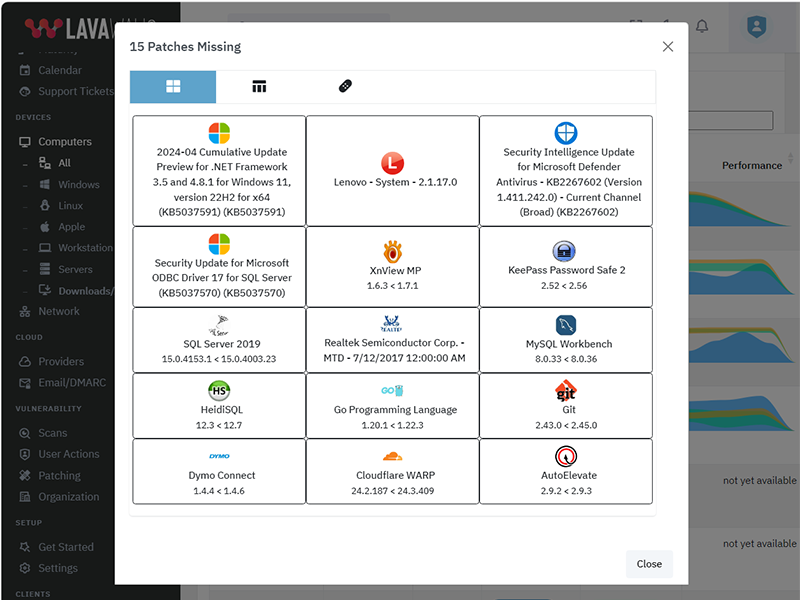
The above listing includes products that Lavawall® monitors through public information and/or proprietary statistical analysis.
Although we do have a partner relationship with some of the listed products and companies, they do not necessarily endorse Lavawall® or have integrations with our systems.
Learn More

Flexible Term; Flexible Service
Flexibility for your dynamic business
You need to get your arms around compliance and security and don't want to get locked into “high watermark” monthly invoices or multi-year contracts.
Pay-as-you-need monthly pricing
DIY, full management, and coaching options
Choose the plan that's right for you
Simple pricing. No hidden fees. Advanced features for you business.
Month
Annual
Get 2 months free with Annual!
Minimal
Pay-as-you go. No Commitments.
C$3.25 /computer/Month
C$32.50 /computer/Year
-
1 computer
or 1 of the following cloud integrations:
AWS, Axcient, Datto, Google, Huntress, M365, Sophos Central integrations
(each integration counts as 1 computer) -
50+ application patches
-
30-day Logs
-
Security configuration monitoring
-
Lavawall® support
-
Domain Scanning: C$20/domain
-
Level 3+ IT support for IT
-
IT coaching sessions
-
Automatic discount and upgrade to Business Standard at 77 devices
Business Standard
Basic services with 90-day logs
C$250 /Month
C$2,250 /Year
-
150 computers
Additional computers: C$2.50/computer -
25 domains
Additional domains: C$15/domain -
AWS, Axcient, Datto, Google, Huntress, M365, Sophos Central integrations
-
7,438+ application patch monitoring
-
90-day Logs
-
Security configuration monitoring
-
Lavawall® support
-
Level 3+ IT support for IT
-
IT coaching sessions
-
Automatic discount and upgrade to Full Service at 950 devices
Full Service
Optimize & audit-ready your IT
$2,250 /Month
$22,500 /Year
-
1,500 computers included
Additional computers: C$2/computer -
125 domains included
Additional domains: C$10/domain -
AWS, Axcient, Datto, Google, Huntress, M365, Sophos Central integrations
-
7,438+ application patch monitoring
-
365-day Logs
-
Security configuration monitoring
-
Lavawall® support
-
L3 IT support for IT
-
IT coaching sessions
Frequently Asked Questions
If you can not find answer to your question in our FAQ, you can always contact us or email us. We will answer you shortly!
General Questions
- Two years after a missing Plex Media Server led to the LastPass breach, the
Remote Monitorign and Management (RMM) tools availabel for Manged IT Service Providers (MSPs)
still didn't monitor for it.
Going through industry-specific applications, we noticed many were missing from the big RMM and patching providers. MSPs, insurance providers, and organizations that put their cleints at risk need to know about these risks, which lead to the largest number of critical audit findings and breaches - After 20 years of writing the same audit findings about system configurations, Payment Card Industry (PCI) compliance, and missing patches, our technical co-founder wanted to make it easier fo avoid these findings
- The existing risk visibility tools for insurance underwriters took a shallow look at Internet-facing risks. They -- along with all businesses -- need a deeper view of the threats that could actually lead to breaches.
- Domain risks
- Operating System (OS) patches
- Application patches
- Network vulnerabilities
- Cloud vulnerabilities
- OS configurations
You can use your own logo for the console and notifications. You can also use a CNAME to automatically brand your console.
Note: you cannot currently re-proxy the CNAME to Lavawall® through Cloudflare.
Lavawall® supports the following operating systems:
Lavawall® does not currently support non systemd distributions, such as Devuan, Artix Linux, PCLinuxOS, OpenWRT, and DD-WRT. However, we will support them by the end of 2024.
In June 2024, we combined the Windows and Linux systems for a consistent experience. This added support for RedHat and MacOS.
Privacy & Security
However, we do allow passwords and use passwords as part of the zero-knowledge encryption for your clients' sensitive data, such as Bitlocker keys and Personally-Identifiable Information (PII).
These passwords use Argon2id slow hashes with individual salts and peppers. They go through a few hash rounds on your computer before being sent to our servers for further hashing.
We have added an additional secure tunnel that mimics the TLS process within the public TLS tunnel. This extra tunnel provides authentication and privacy for the workstations and the Lavawall® servers to prevent attacks such as the one that took down Solar Winds.
Remote access is not enabled for read-only and audit situations.
Get In Touch
Have a quick question and don't want to talk? Send us a quick note with the form below and we'll reply within one business day.
NW Calgary:
ThreeShield Information Security Corporation
600 Crowfoot Crescent N.W., Suite 340
Calgary, Alberta
T3G 0B4
SE Calgary:
ThreeShield Information Security Corporation
105, 11500 - 29th St. SE
Calgary, Alberta
T2Z 3W9
Canada

